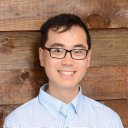Cited By
View all- Puram VGeorge KThomas J(2024)Quantum Representation for Deterministic Push-Down AutomataElectronics10.3390/electronics1322453113:22(4531)Online publication date: 18-Nov-2024
- Venev HGehr TDimitrov DVechev M(2024)Modular Synthesis of Efficient Quantum UncomputationProceedings of the ACM on Programming Languages10.1145/36897858:OOPSLA2(2097-2124)Online publication date: 8-Oct-2024
- Kang CLee JOh H(2024)Statistical Testing of Quantum Programs via Fixed-Point Amplitude AmplificationProceedings of the ACM on Programming Languages10.1145/36897168:OOPSLA2(140-164)Online publication date: 8-Oct-2024
- Show More Cited By


